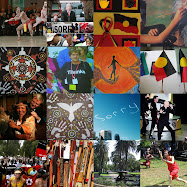
Bienvenue et bon séjour!

 I couldn't choose which photo of images from the side of an outside broadcast van to feature, but in honour of my cricket-mad son, went for the top one. It may well be winter, but training for the next cricket season starts this week!
I couldn't choose which photo of images from the side of an outside broadcast van to feature, but in honour of my cricket-mad son, went for the top one. It may well be winter, but training for the next cricket season starts this week! Sunday morning on the edge of Rozelle Bay (which is part of Sydney Harbour) at Glebe Point. This is a couple of hundred metres from the tram stop shown yesterday.
Sunday morning on the edge of Rozelle Bay (which is part of Sydney Harbour) at Glebe Point. This is a couple of hundred metres from the tram stop shown yesterday.
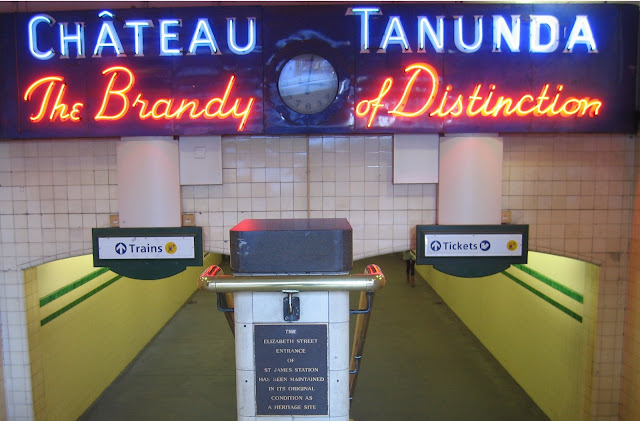
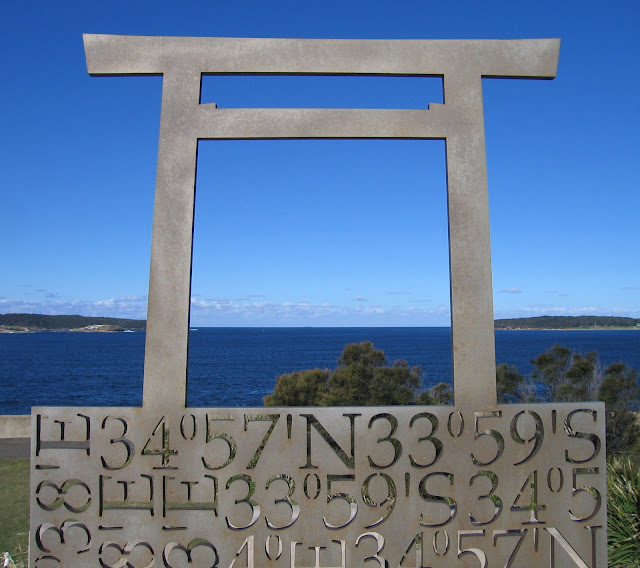 Commemorating the sister ports relationship between Sydney Ports Corporation and Yokkaichi Port Authority, Japan.
Commemorating the sister ports relationship between Sydney Ports Corporation and Yokkaichi Port Authority, Japan.

In October 1969, New York artist Christo arrived in Sydney to wrap Little Bay (about 10 kilometres south of Bondi). The project attracted a lot of comment, much of it critical and mocking . His team of workers included art students and rock climbers. A group of thugs arrived and ridiculed the workers, and a scuffle broke out. Opinions varied from that of the Sydney Morning Herald’s JAC Dunn who said “The more you look at the rippling acres of polyweave enveloping the rocks….the more you get the Christmas feeling: ‘What’s underneath?” to the tabloid Daily Telegraph which asked “Who called the fire brigade?”
(From James Cockington, History Happened Here : strange but true stories from Australian suburbia.)
Having moved to Sydney the year before, but only being 11 years old, I have a vague memory of all this occurring, and would love to have seen it, but alas I didn't . . . all I can remembr are some black and white TV news images.
Pictures of Wrapped Coast
 Christo's other projects included wrapping The Reichstag in 1995, and the Pont Neuf in 1985.
Christo's other projects included wrapping The Reichstag in 1995, and the Pont Neuf in 1985.
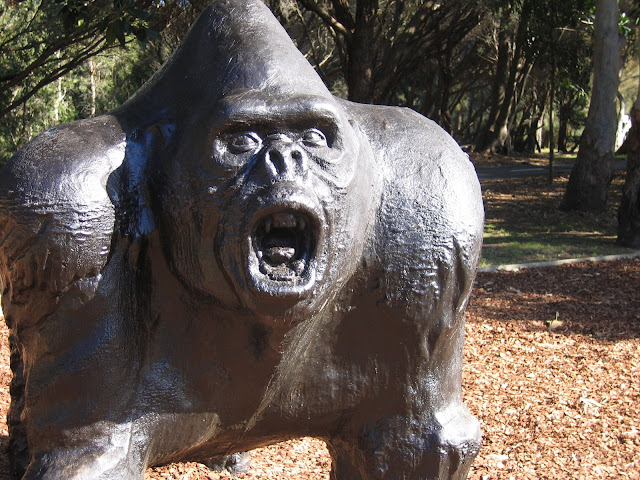 Still in the park we visited yesterday....
Still in the park we visited yesterday....

 A family picnic beside the Barrack Tower, La Perouse. It has been there since the early 1820s to prevent smugglers entering Botany Bay unseen. It is the oldest building still in existence on the shores of the bay. From the 1830s it was a Customs House, and in 1868 it was used as a local school. Restored by the La Perouse Monuments Trust, 1961.
A family picnic beside the Barrack Tower, La Perouse. It has been there since the early 1820s to prevent smugglers entering Botany Bay unseen. It is the oldest building still in existence on the shores of the bay. From the 1830s it was a Customs House, and in 1868 it was used as a local school. Restored by the La Perouse Monuments Trust, 1961.
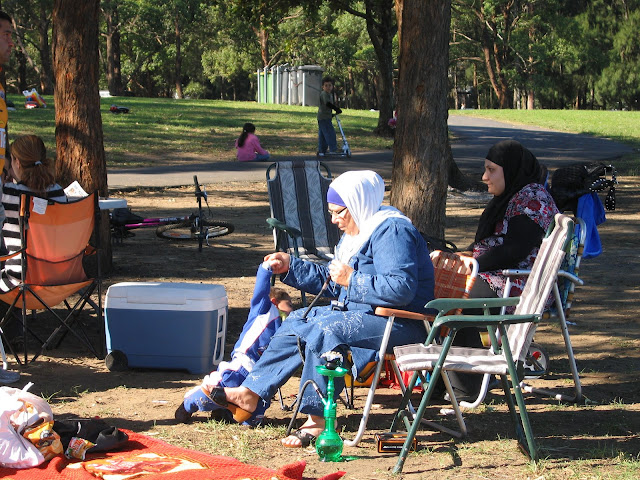

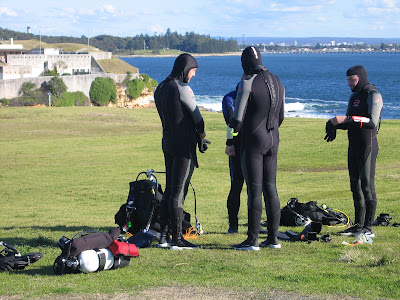
 "How to mark Bastille Day on Sydney Daily Photo, with an Aussie flavour? " I wondered.
"How to mark Bastille Day on Sydney Daily Photo, with an Aussie flavour? " I wondered.
 Today when I arrived there was a group of French speaking young people just packing up musical instruments; I had missed celebrations featuring the Orchestre Polyphonique from Île de la Réunion. Which just proves how even-handed I am, because I also missed the 29 April celebrations on the opposite side of Botany Bay, commemorating the arrival of Captain Cook! (see this blog)
Today when I arrived there was a group of French speaking young people just packing up musical instruments; I had missed celebrations featuring the Orchestre Polyphonique from Île de la Réunion. Which just proves how even-handed I am, because I also missed the 29 April celebrations on the opposite side of Botany Bay, commemorating the arrival of Captain Cook! (see this blog)  * Hmmmm- perhaps at the Musée Branly in Paris, which has a modern Aboriginal art collection?
* Hmmmm- perhaps at the Musée Branly in Paris, which has a modern Aboriginal art collection?




 Dad would have been 79 today. He died last year. Dad was a technical genius. Here he is (at right) as chief instructor at Olivetti's training school in Sydney in the 1970s, teaching others how to fix mechanical adding machines or typewriters.
Dad would have been 79 today. He died last year. Dad was a technical genius. Here he is (at right) as chief instructor at Olivetti's training school in Sydney in the 1970s, teaching others how to fix mechanical adding machines or typewriters.

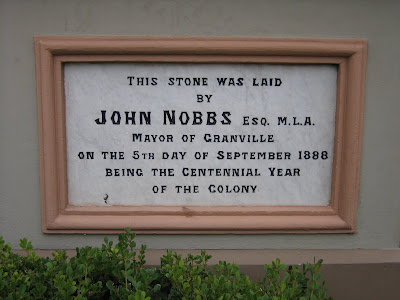


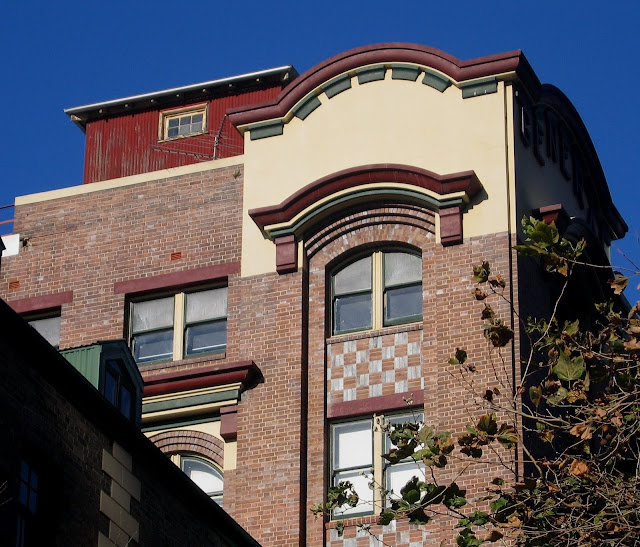
 The Britstop is a 1949 London double-decker bus, available for private hire. The website says:
The Britstop is a 1949 London double-decker bus, available for private hire. The website says:


